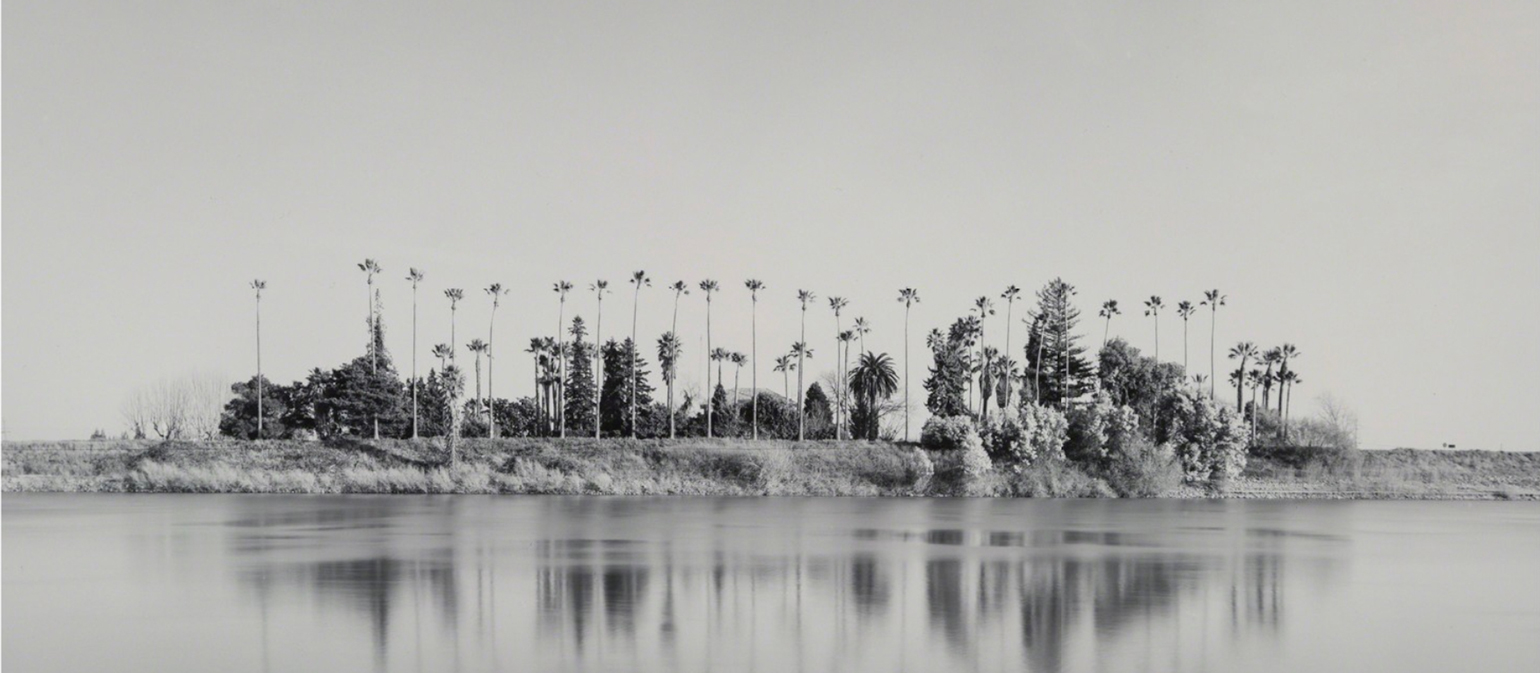
Altered Landscapes: Photography in the Anthropocene
In the photographs gathered here, humanity’s impact on the natural landscape is undeniable, even if human figures are not immediately visible. For example, compare Eliot Porter’s “Green Reflections in Stream” and William Greiner’s “TV in Bayou” (both below). Porter’s tightly cropped photograph frames nature as unspoiled and inaccessible. Greiner focuses on the debris of modern technology, showing the impact of humans even in a seemingly deserted marshland. Beauty and pathos go hand in hand.
This installation also suggests how photographs can be controlled or altered, showing the world as their makers want us to see it. For example, in a digital collage of model planes, rocks and towels, Michael Stone asks the viewer whether there is such a thing as an unaltered landscape.

Robert Dawson (American, b. 1950)
“Delta Farm, Sacramento River, California” from “The Great Central Valley Project,” 1984
Gelatin silver print
Georgia Museum of Art, University of Georgia; Benefit of annual membership in the Friends of Photography, 1989
GMOA 1990.45
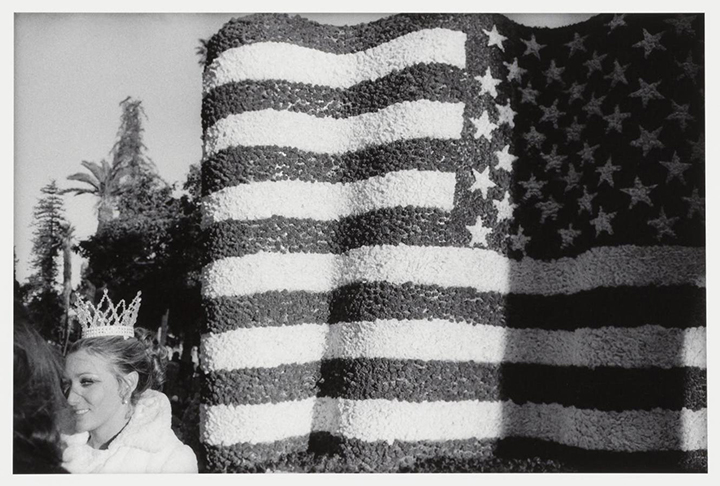
Robert von Sternberg (American, b. 1939)
“Pasadena Rose Parade,” 1971 (printed 2017)
Archival pigment print on paper
Georgia Museum of Art, University of Georgia; Gift of the artist
GMOA 2017.251
Like fellow California photographer Robert Dawson (whose “Delta Farm” is visible above), Robert von Sternberg examines how human enterprise has reshaped the natural landscape of his home state. Here this alteration takes on a more literal form: a sea of flowers transformed into a billowing American flag. The first Rose Parade took place in 1890 to showcase the state’s mild climate and natural bounty. Yet, since then, the industrialization of California agriculture has led to significant problems, including groundwater depletion, soil and waterway contamination and the demise of the small family farm.
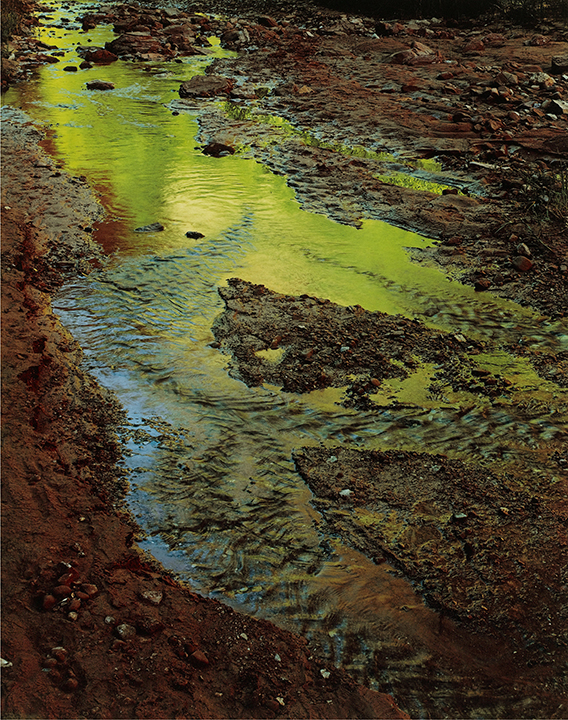
Eliot Porter (American, 1901 – 1990)
“Green Reflections in Stream, Moqui Creek, Glen Canyon, September 2, 1962” (printed 1980)
Dye transfer print on paper board mount
Georgia Museum of Art, University of Georgia; Gift of Hilda and Arden O. Lea in memory of Mark A. Lea
GMOA 2001.70
Eliot Porter reinvented the genre of nature photography through intimate, semi-abstract compositions like this one. Porter traveled through Glen Canyon shortly before the US Bureau of Reclamation built a hydroelectric dam on the Colorado River that flooded the landscape. The Sierra Club later published his photographs, full of wonder and loss, in the book “The Place No One Knew.” Yet Porter’s vision of untouched nature disregards the historical presence of Native Americans, who did know this place, and whose ancient petroglyphs in the canyon were also drowned by the dam.

William Greiner (American, b. 1957)
“TV in Bayou,” 1993 (printed 2001)
C-print
Georgia Museum of Art, University of Georgia; Gift of the artist
GMOA 2001.61
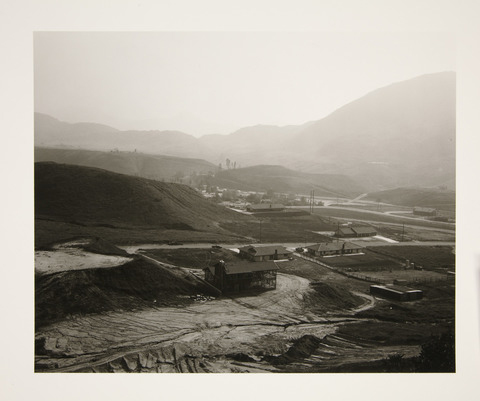
Robert Adams (American, b. 1937)
“New Housing, Reche Canyon, San Bernadino County,”1985
Gelatin silver print
Georgia Museum of Art, University of Georgia; Museum purchase with funds provided by the Friends of the Museum
GMOA 1998.14
In photographs of urban and suburban scenery, Robert Adams tries to reconcile the transformed terrain of the American West with its natural splendor. In this image, clear-cut forests and half-built houses capture the traces of human life and environmental change. These features challenge the idea that the West offers an unlimited natural resource for human consumption. At the same time, the soft misty light that saturates the scene and the dense forests that blanket the mountainside together insist that the beauty of this landscape has not been entirely destroyed.

Michael Stone (American, b. 1945)
“57 times 4,” 2013
Digital composite
Georgia Museum of Art, University of Georgia; Gift of the artist
GMOA 2017.280
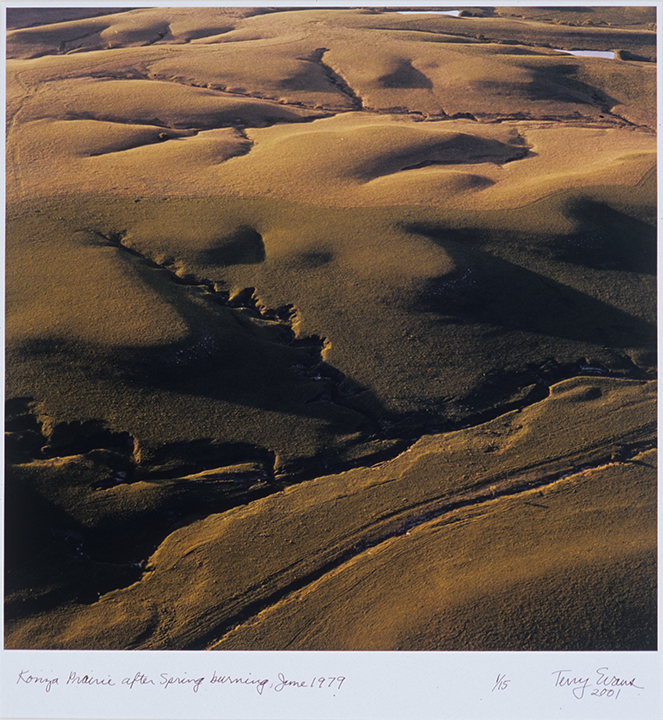
Terry Evans (American, b. 1944)
“Konza Prairie after Spring Burning,” 1979
Chromogenic photograph
Georgia Museum of Art, University of Georgia; Gift of Hilda and Arden O. Lea in memory of Mark A. Lea
GMOA 2001.84
Since 1978, Kansas photographer Terry Evans has devoted herself to the subject of the Midwestern prairie. Early white settlers considered the prairie an infertile wasteland. Yet its grassland ecosystem is one of the most biodiverse on the planet. In this aerial view, Evans shows the outcome of a spring burning. White ranchers adopted this ancient custom of controlled fires from the Konza (or Kaw Nation). These seasonal burns renew the landscape, allowing a rich array of native species to flourish. Far from a pristine wilderness, the prairie has long depended, as Evans writes, on “the kinship between humans and nature.”
Click and drag in the photo below to see a 360° view of the installed exhibition.
[wpvr id=”5659″]